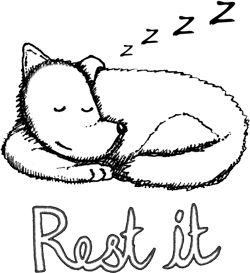
“Content design in practice” is the latest version of a training course on writing and editing that I present with Jane Matthews.
This course started in 2004
Back in 2004, Lesley Twitchen from HM Revenue and Customs asked me to create a training course for colleagues on her team, writing guidance for staff to use when answering telephone queries on the PAYE helpline. (PAYE – Pay As You Earn – is the way most people in the UK pay their tax from employment).
The term ‘content design’ had yet to be invented, and we didn’t do much online training nearly 20 years ago. But the PAYE guidance team was based in several different Revenue locations, and I knew that I’d want to both iterate the course and to ensure that people who had been on earlier versions of it could keep up to date. So I based the training materials on a website: Editingthatworks.com. I called it ‘editing that works’ because the team had large quantities of existing material and rarely had the opportunity to write from scratch.
We taught it at EBI
A few years later, Francis Rowland contacted me. He was working at the European Bioinformatics Institute (EBI) and wanted to know whether I knew anyone who taught writing for the web – so that’s how I ended up running intensive writing workshops with research scientists and bioinformatics computation specialists.
At that stage, Jane Matthews joined me and we spent many happy hours working with examples about topics such as protein folding that were completely new to us. That’s how we learned that the ideas I’d refined with the help of folks at the Revenue some years before were also effective when applied to challenging technical and scientific materials. We taught that course as ‘Write clearly’, and took the opportunity to update it with references from Ginny Redish’s book on content design: Letting Go of the Words.
As a bonus, Francis (who combines being an expert designer with being a very talented sketchnoter), drew a series of charming cartoons to illustrate materials. I chose ‘Rest it’ for this blog post because of the way this course has been “rested and tested” over the years.
“Rest it and test it” is one of the key ideas that we teach in the course, and I think it’s so important for content design (also known as writing for the web, also known as editing that works) that I asked Julia Allum to create a poster for it: Rest it and test it.
Content design in practice is the newest version
Earlier this year, a few conversations led to the idea of maybe looking at our course again. This time, Jane and I decided to move to presenting it online. We also changed the name once again, as now most of us think of ‘content design’ rather than ‘writing for the web’ – especially as it’s now much easier to convince managers and budget-holders that we need to design all the content, including content that is delivered on letters, apps, and even other media such as posters or by telephone.
We had a small but interestingly varied group
We are still using the same nine-step process for improving any piece of web or professional writing and editing.
As always, we asked participants to supply real-life examples of content that they felt could be improved. The mix of examples they supplied – from higher education, local government, the charitable sector and UX – made for a fascinating and stimulating afternoon.
The nine techniques are covered in more detail on the Editing that Works website. And if you’d like to see how it’s changed, have a look at the web archive version starting in 2004. For example, Rest it and test in the April 2004 version.
Thanks to all the participants for joining us, and being willing to share their work.
